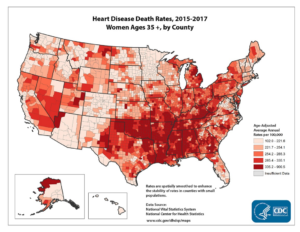The Covid-19 pandemic has forced many of us Millennials to abandon our social calendars full of grabbing drinks with friends, going out for date nights at fun new restaurants, or spending hours on Sunday at bottomless brunch. Instead, we have been hunkered down at home learning how to bake banana bread. Many of us have been put in a position we may never have had to be in, one in which we must now rely more on home cooking than take-out. Because of this, you may be taking this opportunity to establish some new healthy dietary habits: drinking more water, eating less junk food, maybe adding more veggies to your plate at dinner. If that sounds like you, congratulations! If not, that’s okay too! My goal is to provide those of you who have begun to make positive dietary changes the motivation and tools to sustain them (and maybe even add on to them) and to help those of you who haven’t made changes find the motivation and the tools to help you do so. Taking advantage of this time and creating these healthy dietary habits now could help you prevent dealing with health issues later in life!
WHY: Motivation and CVD Risk
“An ounce of prevention is worth a pound of cure” – Ben Franklin
Motivation can be one of the hardest parts of making changes. As young adults, we barely have time to plan what’s for dinner tonight let alone think about our future health. However, according to the results of a recent study published in the International Journal of Epidemiology, you will probably develop at least one chronic disease by the end of your life (Meszaros, 2019). According to these findings, men actually have a higher risk of developing chronic disease than women. This makes sense, right? Many people associate chronic diseases with older men! Well they based these findings on several aspects, including 5 modifiable lifestyle factors which included: BMI, cigarette smoking, alcohol consumption, unhealthy diet, and physical inactivity. Do any of those lifestyle factors sound like something you may have struggled with? Probably! These are major aspects of our lives and it can definitely be difficult to maintain healthy habits when you’re enjoying your life. But these are all risk factors for chronic disease, and one particular disease that is a product of these risk factors is cardiovascular disease (CVD) (CDC, 2020).
You’re probably wondering why I would even bring CVD into this conversation. After all you’re probably a young, relatively healthy woman, not an old man like we discussed earlier. It may surprise you to know that although men have a higher absolute risk of CVD, the relative risk of morbidity and mortality is actually higher in women (Möller-Leimkühler, 2007). Basically, that means that women have a high risk of developing and dying from CVD. In fact, CVD is the leading cause of death for women in the United States and is responsible for 1 in 5 deaths (CDC, 2020).
While we tend to associate CVD, and chronic diseases in general, with our parents’ and grandparents’ generations, approximately 1 in 16 women age 20 and older have coronary heart disease and CVD mortality rates are on the rise in women ages 35-54 years old (CDC, 2020; Young & Cho, 2019). Before reading this, you may have never associated yourself and your friends as a demographic at risk for developing CVD. However, now you may begin to understand that chronic disease prevention can start even earlier than you had thought. Acknowledging your risk may help you to find the motivation you need to make changes.
WHAT: Dietary Changes
Motivation is important but it’s just the start. Change is hard to achieve if you don’t know what to do or where to even start. So, let’s tackle an aspect of your life we’ve already touched on: your diet. Poor diet is not only a risk factor itself, but it is also one of the main risk factors for obesity which can also severely limit your activity. But putting yourself on strict diet or completely revamping your dietary habits can be difficult to sustain and can make it hard to enjoy your life. With that being said, lets focus on one goal that you can maintain fairly easily that will help you create and sustain a heart healthy diet and, ultimately, lifestyle: dietary fat intake.
While dietary recommendations have focused on decreasing saturated fat intake to lower CVD risk, studies have shown that replacing it with polyunsaturated fats even further reduces risk (Liu, et al., 2017). Saturated fats are mainly from animal sources and tend to be solids at room temperature, think butter or steak. Unsaturated fats are mostly plant based, such as almonds, sunflower seeds, and olive oil, but can also be found in some types of fish, such as salmon or tuna (Mayo Clinic. 2019).
Now that you know what to eat more of and what to eat less of, lets make a plan on how you’ll do it! One easy way is to use oil instead of solid fats (like butter) while cooking. Olive oil is a great substitute for sautéing meats and vegetables, while canola can be used in baking (Mayo Clinic, 2019). Another way to increase the healthy fats is to substitute fish for meat, but make sure to broil or bake it rather than frying (Mayo Clinic, 2019). You can also increase your healthy fat intake by switching out the junk foods for nuts, seeds, fruits, or vegetables, when you need a snack.
HOW: SMART Goals

There are a million aspects that effect what you eat like how it tastes, how it looks, how much it costs, how convenient it is, what commercials you watch, what ads you see on social media, how healthy (or unhealthy) it is, who you’re eating with, where you’re eating… the list could go on and on. These factors can make sustaining health changes very difficult but creating SMART goals can help you create, maintain, and sustain those changes.
Smart goals are:
- Specific- What do I want to accomplish and why?
- Measurable- How much or how long? How will I know that I have succeeded?
- Achievable- How can I accomplish this? Is it realistic?
- Relevant- Is this worth it? Is it right for me?
- Time bound- When? Today, 6 weeks, 6 months? (The Mind Tools Content Team, n.d.)
Think about these questions while creating your goal. Since our goal is to increase our healthy fat intake, our SMART goal might sound like this:
“Increase healthy fat intake to help prevent CVD by preparing fatty fish (such as salmon or tuna) for dinner 2 nights a week for 6 weeks.”
- Specific- We want to increase our healthy fats to prevent CVD
- Measurable- We will record how many times we eat fish a week
- Achievable- We are only committing to 2 meals a week
- Relevant- We are at risk of developing CVD
- Time bound- We will do this for 6 weeks
And there you have it!
You can apply this template to any of the ways to increase healthy fat intake. Once you achieve your goal, you can set new, longer lasting goals. This technique will help you keep your dietary changes achievable and sustainable. Creating these types of changes will ultimately allow you to develop healthy habits that will fit into your lifestyle. You can consume a heart healthy diet and still be able to join your partner for happy hour or your friends for brunch.
References:
Centers for Disease Control and Prevention. (2020). Women and Heart Disease. Retrieved from https://www.cdc.gov/heartdisease/women.htm
Liu, A.G., Ford, N.A., Hu, F.B. et al. (2017) A healthy approach to dietary fats: understanding the science and taking action to reduce consumer confusion. Nutr J 16, 53 (2017). https://doi.org/10.1186/s12937-017-0271-4
Mayo Clinic (2019). Learn the facts about fats. https://www.mayoclinic.org/healthy-lifestyle/nutrition-and-healthy-eating/in-depth/fat/art-20045550
Meszaros, L. (2019). Women vs men: Which is more likely to develop a chronic disease? https://www.mdlinx.com/article/women-vs-men-which-is-more-likely-to-develop-a-chronic-disease/lfc-4213
Möller-Leimkühler, A. (2007). Gender differences in cardiovascular disease and comorbid depression. Neuropsychiatry and Cardiovascular Disease Dialogues in Clinical Neuroscience, 9(1), 71-83. doi:10.31887/dcns.2007.9.1/ammoeller
NHG-Pharmacy (2020). All About Fat https://www.pharmacy.nhg.com.sg/mobile/page.aspx?id=1654
The Mind Tools Content Team (n.d.). SMART Goals: – How to Make Your Goals Achievable. https://www.mindtools.com/pages/article/smart-goals.htm
Young, L., & Cho, L. (2019). Unique cardiovascular risk factors in women. Heart, 105(21), 1656-1660. doi:10.1136/heartjnl-2018-314268


